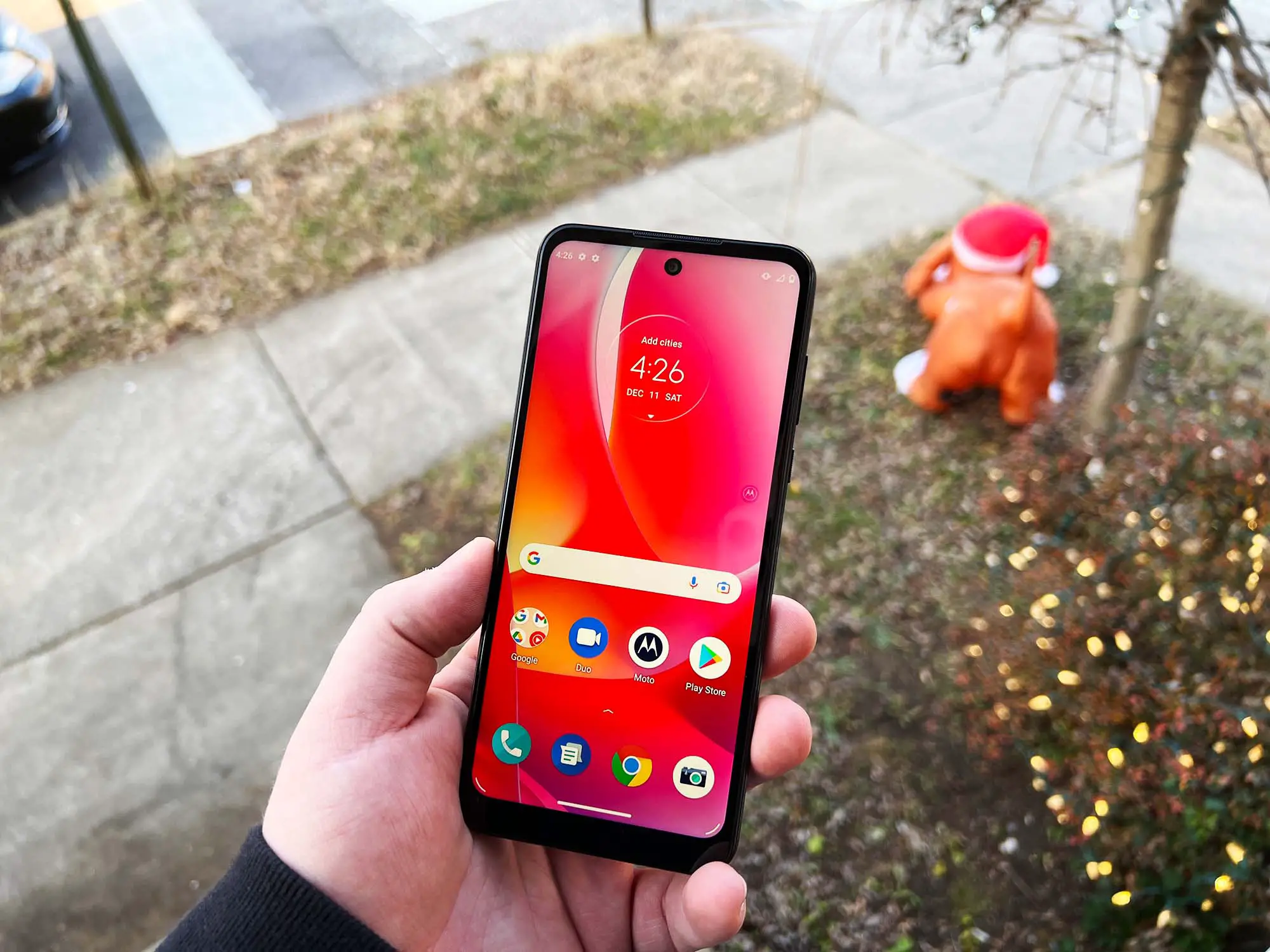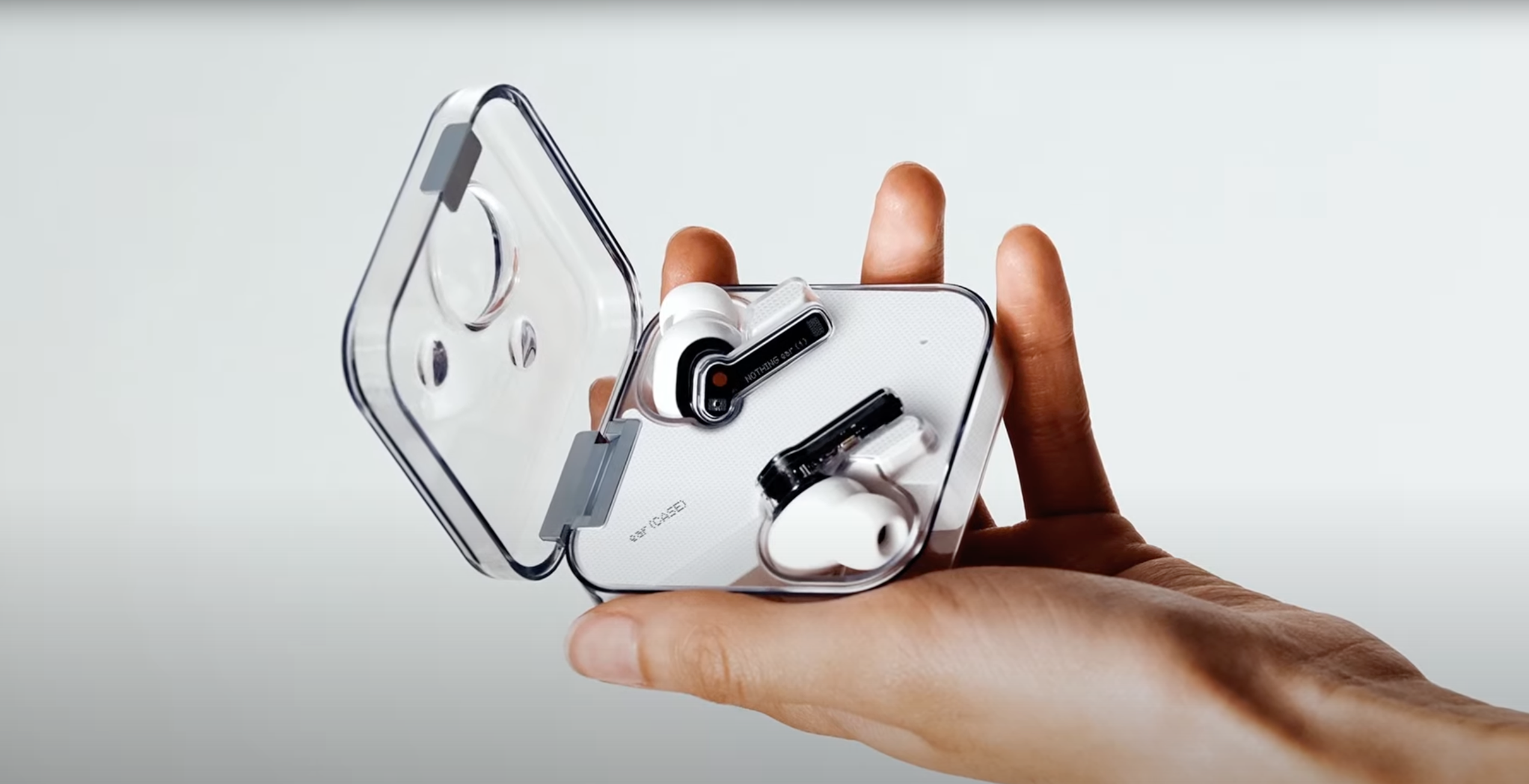
When a handset is slow to get the latest version of Android, annoyed consumers are quick to point the finger at the custom user interfaces that companies like Samsung, Motorola, and HTC deploy on their devices. The fact that this custom software is often deemed clunky, superfluous, or differentiation for differentiation’s sake doesn’t help quiet the accusations. According to one Motorola executive, however, this simply isn’t the case.
Motorola’s senior vice president and general manager of Enterprise Business Christy Wyatt says hardware plays as large a role as, if not a greater one than, software customizations in slowing down the Android update process. Her explanation is simple enough. Google builds each new version of Android based on a the hardware of a specific “Halo” device. For Android 4.0, this is the Galaxy Nexus. The source code released to manufacturers and developers is based around the software built for this specific device. When an older handset (or new one, for that matter) utilizes a different processor, different cellular radios, or any number of specification configurations that don’t align with the Galaxy Nexus, changes must be made in that source code.
The issue is compounded by an overabundance of Android phones needing updates and the often extensive software approval process of carriers. While the latter is likely to change no time soon, manufacturers have expressed a need to release fewer handset in 2012 and instead focus on creating a handful of excellent devices. With less phones to worry about, Motorola’s software team can devote more time to preparing updates for their Android lineup.
Wyatt’s words wont do much to help your phone receive its Android update any sooner, but it does help to point out that the manufacturer and carrier aren’t solely to blame. The way Google handles its Android source code releases plays a large part in how quickly updates can be delivered.
[via Droid Dog]










Not an entirely satisfying answer, considering most android tablets released last year had identical hardware, yet the xoom wifi is the only one that’s been updated.
Now look at the tablets that were sold through carriers vs. those that were sold directly to users, and compare how they have been upgraded…
I completely agree… Even that galaxy nexus couldn’t keep the hardware the same for different carriers. Software fragmentation? More like hardware fragmentation!
How come whenever Microsoft issues a new operating system, most computers just magically work or ubuntu for that matter?
Why don’t drivers work pretty much the same from version to version?
I don’t get it.
Sounds like you haven’t moved from version to version of windows very often, very popular hardware has drivers included in the next version of windows, but specialty hardware often never gets updated and you have to either try a driver for an older os, which may or may not cause system instability or buy new hardware.
The simple fact is that one way or another someone needs to update the drivers, usually it’s the manufacturer and Motorola is the manufacturer so they get to write the drivers.
From a user’s perspective it just seems like it all magically works, because windows can’t release a software upgrade that only works on one model of dell’s. Windows also benefits from the fact that beyond installing some bloatware, pc manufacturer’s don’t customize windows.
Android is developed in a much different fashion than Windows, closed vs open source.
Your comment is more correct with Ubuntu than Windows.. Cellphones are a bit different hardware wise, and it’s a rapid cycle of hardware development.. many of the processors in phones also have radios and GPS built in them. unless the manufacturer can supply everything to Google as Google is developing their next version, there is little chance of things just working off the bat.
Haha, who the HELL would believe them?
Developers have other versions of Android running with no problems, usually within a month.
It’s just that they want you to buy a new phone to get that new version of Android, ESPECIALLY Motorola.
Exactly, and add to that Motorola said Motoblur wasn’t to blame for poor battery and speed issues when the same phone running something like CM was totally different. Sounds like a bunch of excuses on poor update procedures.
NO Problems? Really? Really?? When was the last time a ROM was released with no problems?
Developers do a great job and are far more talented than I could ever hope to be, but the idea they are perfect is a bit ridiculous. They have just as many problems as OEMs have, they just don’t get as much bad press when there is a problem.
Xoom is an AOSP device, that’s why.
caveat: Wifi version only
Here’s how the update problem gets solved…
Step 1: Google develops an Android FRAMEWORK to be installed on all devices. All interaction between Android OS and hardware will talk via the framework. This eliminates the need for hardware drivers to be written for specific hardware, which causes severe delays in updates.
From here, it’s strictly a base Android with TouchWiz/Sense/etc GUI mods. (AOSP Preferred heh).
Step 2: See Step 1.
Allowing a framework to be run between the hardware and OS would essentially allow any ROM to be installed on any hardware. Manufacturers shouldn’t really care about this. Sell the hardware, don’t focus on GUI mods, and encourage whichever GUI mod each user is comfy with. The hardware and service are where money is made. Serve the user.
In other words, create a virtual machine between the OS and the actual hardware. If the interface between the OS and the VM is well documented and remains unchanged, there would minimal lag time when new updates are released. This does cause the OS to run slightly slower but with the new quad-core processors running as single-cue multi-server (think single bank-line and multiple tellers) each process would be processed by any of the four processors when it is in the front of the cue. Of course process priorities must be considered but the bottom line is . . . it is possible to support multiple processor types with a single OS. Google just needs to update their architectural approach. This is the approach main-frames used decades ago!
Sounds kinda like Blackberry OS… Tell me how well you think that’s working out?
I was simply responding to
ShangTsung702’s proposal by pointing out that substituting Virtual Machine for his “Framework” is a methodology that has been used for decades.
I don’t know anything about the architecture of the Blackberry OS or Android for that matter. In the past, virtual machines have been used to isolate the hardware from the OS . . . thus allowing multiple and different operating systems to run concurrently.
I was simply proposing turning this around in a manner that would easily allow a single OS to run on many different hardware platforms in the same manner as ShangTsung702 proposed. Each platform would need to supply a VM that would talk directly to their hardware that was compatible with the VM protocols. The downside to this is that a different OS could then have a defined methodology by which they could talk to the same hardware especially if the protocol was defined as part of an open architecture.
Now on to Blackberry’s failure. One of the rules of Marketing is – “Success often leads to arrogance, and arrogance to failure”. They failed to anticipate the impact that Android would have on their market and develop a strategy to counter their threat. What should that strategy have been? . . . . I don’t have a clue. It’s not my product line and I don’t really care to speculate.
Blackberry OS is largely Java based, and as such runs much like a VM. As a result, it’s slow and difficult to program for when you want direct access to hardware, such as for wifi scanners, etc. Personally I would hate to see Android move into being a VM based architecture…
I wasn’t making a comment as to their business success/failure per se, more of a reference to their OS architecture. I had a Blackberry storm, and got burned. My boss still has a blackberry (bold) and is likely to upgrade to an iPhone or Android device in the near future (trying to talk him into looking at the Galaxy Note).
Nice conversation – I learned something – It’s too bad everyone can’t be civil when protected by the net. – Peace
This talk of frameworks and virtual machines is nice and all, but someone still needs to talk to the metal.
Examples:
A game will communicate with the graphics display with the standard API/Framework for DirectX (win pc) or OpenGL. How that framework talks to the hardware is the driver specific to that make & model.
A monitor will have a standard api for displaying pixels, but the programmer doesn’t care about the shape of the pixels (pentile?) or the refresh rate. That is all handled in the driver.
You send a packet of information over the internet … you have a different driver for every wired & wifi network card.
—————————
Windows, Linux, Mac OS, they all use drivers. The reference release of Android is designed to work with support for specific current & legacy products. If you want to release something different/new (e.g. quad-core cpu in a phone), you will have to add the support and qualify it yourself (ideally with Google’s help, which they’re paying for).
End of story. No two ways about it.
As for multiple Virtual Machines on an ARM platform. I recall hearing that there were issues with that in that the system architecture lacks some hardware support for it. They make up it (and other things) in software. The PC platform is much more mature for complex usage models.
a framework does not equal a virtual machine (compile once, run anywhere). a framework is a good idea because it would add a level of indirection. however, the real necessary sol’n is just a well defined and designed interface (i.e., api) that the manufacturers can code to and can stand the test of time.
That isn’t any kind of magical solution. In fact the Android framework sits on top of abstractions for pretty much all of the hardware — there is OpenGL ES for the GPU, the driver protocol for managing the low-level parts of the GPU, a driver protocol for the battery, the RIL for interaction with the radio, and on and on.
What you completely gloss over is that unless all of these abstractions are static and unchanging, they don’t do anything to solve your problem. When Android 3.0 introduced HW accelerated drawing, there were many new requirements on the GPU drivers also introduced. Important optimizations like putting window surfaces into overlays require other new features in the GPUs. Power management improvements can require changes in that part of the abstraction, audio improvements over there, and on and on.
“It’s not our retarded unnecessary UI overlay bull$#1+ and special bloatware packages! It’s the hardware!”
Suuuuuuuure.
I think a good response to his “hardware is the problem” claim would be a list of all the phones that currently have stable 4.0 ROMs available AND the number of said ROMs available for each phone. Then I’d like to see a list from the carriers showing how many phones have official 4.0 firmwares awaiting or in the approval process. I’ll bet the numbers are drastically different.
You can’t REALLY blame it on the skins either considering how many stable ROMs out there are heavily modded. The fact of the matter is, if OEMs wanted us to have the updates that badly, they’d produce them and submit them quicker. It’s a business, plain and simple. They only update phones to keep people from switching to other manufacturers who ARE updating and they only update enough to keep most end users from thinking they’re getting screwed.
So, there you have it. It’s not the hardware, or the software, or Google. OEMs will continue to do the bare minimum and make excuses about it, until their competition steps up and starts releasing timely updates for all supported hardware. I don’t see any of them doing that any time soon.
So, why can Google update the old Nexus S and Asus can update the Tprime but Motorola can’t update any of its devices to ICS? How is it google’s fault again?
Well, two thing the Nexus S and Prime have in common are that they’re vanilla Android and their updates aren’t controlled by the carriers. That being said, the real reason is because Google wanted to update the Nexus and Asus wanted to update the Prime.
The Xoom wifi has ICS
Yup… Google made a version SPECIFICALLY for the Xoom. Motorola didn’t have to do much with it either. Absolutely zero issues with it, too!
1. Google might have had a hand in or at least consultation regarding the construction of the Galaxy Nexus. Therefore they could have chosen a hardware configuration consistent with the Nexus to make their own jobs easier when supporting both the GN and NS.
2. Google has perhaps had access to the GN device for months before the release date along with beta versions of ICS. It didn’t happen over night. Hell, it still hasn’t happened – ICS on the NS has been delayed for over a month now.
3. Google has only one legacy device which it is upgrading. Other manufacturers release 6-10 devices per year. A daunting task to test and certify so many different hardware configurations.
4. Money.
I’m a UK Nexus S owner, and I’m still waiting for ICS. I downloaded the update in Dec, but Google had pulled it before I had a chance to restart and install it (last time I ever go to the cinema!). I run a checkin everyday to no avail. Gotta say I feel a little resentful of the ongoing delays, as I thought Nexus handsets had Google’s favour poured onto them.
I also really like ‘Eye4Detail’s suggestion – I think vanilla hardware is the way forward. It’s why I opted for a Nexus with a sim-only deal – I don’t care for carrier interference on MY device. They should be happy making millions from being ‘dumb pipes’ and stop trying to grab at their customers in every way.
I miss the days when companies like Motorola would announce “reasons” why updates aren’t coming and Google would respond on their Twitter or other social network account saying something to the affect of “they’re lying and they’re being lazy about things. Nothing is keeping you from getting your upgrade.”
THOSE were the days.
Once I asked motorola why it takes so long for an update to my droid, and they responded with, “cause you touch yourself at night,” needless to say I don’t watch porn on my phone anymore. – true story.
This makes sense to a certain degree, especially with significant changes like those presented in ICS. Some people mentioned how quickly the developers get it running but they aren’t thinking of the fact that a company can’t release an overglorified beta.
They have to go through internal testing, then carrier approval, on top of their development time. Less models will definitely reduce this.
To quote Larry Page “More wood behind fewer arrows”.
” but they aren’t thinking of the fact that a company can’t release an overglorified beta. ”
Samsung does it all the time…
He did say just as big of a part or larger than skins, but they don’t deny the fact that skins cause issues, not only from the perspective code changes and customization’s for different phone models that need to occur but from a performance perspective in which many phones which could easy run and do run an AOSP update of the latest versions in the form of cynogenmod, but because of skins and the performance impact of them, become not officially upgradable.
Quick show of thumbs.
Who else would happily swear loyalty to the first company who “differentiates” themselves by being the only ones to offer their entire line of phones with vanilla Android and a guarantee of timely updates until the hardware won’t support it?
Now that would be a company worth supporting.
So consumers would have to tell the carriers to just pass through whatever updates Google issues, or no deal. Works for me.
Especially with how nice ICS looks. No reason for custom skins from OEM’s anymore. I loved sense because it looked so good, compared to but ugly vanilla froyo
Um, soooo, the manufacturer pretty much just said that it isn’t their fault but it is their fault? Someone from one division of Motorola just kicked another division in the shins it sounds like.
I only buy nexus devices, or root and throw a vanilla Android version on it. The skins from manufacturers are almost always make the android experience a lot worse. I honestly rather get an iPhone than moto blur.
The execs argument is completely faulty, he injustice trying to make an argument for people to upgrade faster. Otherwise how come custom roms manage to get the new version on your phone.
The best device is always the nexus, the; only other android device in would ever consider is the galaxy s line (but I’d root and remove touchwiz).
The skins dramatically slow the phone down, drain battery, and fragment the whole experience, btw. Moto fragmentation in this sense is differentiation and it comes with a negative connotation. Don’t bother trying to differentiate the OS Google does a better job at software, focus on core business and build better hardware.
I still think motorola should release the Razr Maxx for all carriers. Drop the Droid in the name and release a flagship device that covers all carriers and focus on making that the go to device for users. It’ll make updating the devices easier too, since they update one it should be simple to update all.
And yet Moto is the fastest (behind Google) at updating their entire lineup of phones….
Compared to international versions? Honestly don’t know, but I’ve read tons of comments about how fast Samsung updates their European models. Only the US carrier branded ones are slow to receive updates.
No one cares about international versions in the US. All that matters is our phones.
Totally missed the point. Carriers don’t get in the way in Europe so their phones are upgraded faster. Too much bloatware slows things down in the US.
This coming from a company that lied to their users about unlocking bootloaders in 2011.
Also releases the exact same phone but with a bigger battery or unlocked bootloader. Because of course you should buy the phone all over again.
… yessss, and it is christy wyatt again.
bottom line is developers don’t care. Any and all hardware out there has an EOL cycle, regardless of it being a computer, phone, tablet, stereo, refrigerator, and so on. Developers can’t afford to keep providing updates simply because they’re all too interested in starting on the next new product. They all push each other to put out a slew of new products at a furious rate. It’s because of this fact that they force themselves to shelf products 6 months after they were released. They have simply too many products to support and a short pipeline to kick stuff out.
Apple pretends to have a longer life cycle for their products but they have started to omit features from iOS updates in order to entice people to buy the upgraded junk. In fact, they all do that. Think about it, if the developer had put out ICS for an OG Droid, some die hards would never upgrade. They are smart in shelving products so soon as they know people have a tendency to want to buy the latest and the greatest.
Either make it so users can get OS updates quicker than Apple users get iOS updates, or continue to have a worse upgrade experience than their biggest competitor.
I’d love to see CyanogenMod have a certification program, with “CyanogenMod Certified” devices, that would be a small logo on the phone/box. Just have the manufacturer provide source for all drivers to cyanogenmod, and you get the logo.
more reason for me to buy the Nexus every time!
I’m curious – does Wyatt make a reflection when she walks past a mirror?
How about we stop making so many phones and start working on updates to the ones that are out now i mean look at the iphone apples 3GS is still going and is on iOS 5.0.1 yet there is still android handsets being made running froyo some phones in china are still running 2.1 so stop making new handsets and start working on updateing the current phone as far as they will go.
I agree with Motorola here. Google should man up, throw some more
resources at the project and work with the top 4 partners at the same
time to get updates out in sync. If any of the partners leak anything
or mess up the release schedule, they get tossed out of the club and #5
gets added.
BS cyanogen mod is able to do it why can’t moto
so what your saying is that, without the custom UI’s we would be getting updates nearly twice as fast? i don’t care about having to customize for hardware, that is necessary but trying to pull the wool over my eyes by blaming late updates on hardware is stupid. the point is, we would STILL be getting updates quicker without custom UI running rampent.
Well he said it very well. The issue is the massive amounts of handsets being released. It’s dillouting the amount of time they can spend updating their stuff.
Whiiiiiiich is still the manufacturers’ faults.
exactly
If the manufacturers and carriers truly wanted to keep their devices up to date, they would (and could) do it. I was a device driver developer for about 3 years. I know the drill.
There’s merely not enough money in it for them to be terribly excited about it.
Any other explanation is smoke and hot air. However, the point of OS skinning/customization not being the only slowdown is a valid one.
hi friends this is Kate and i want to share my feeling.
This post is very much informative in context. I like to admire the way you explain the topic about Best Mobile Phones.I have searched blog same this since long time.